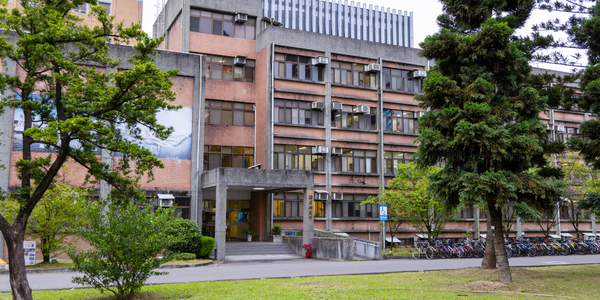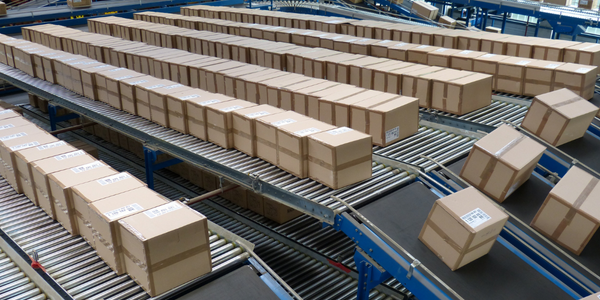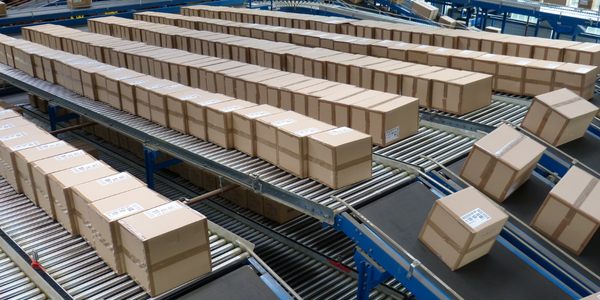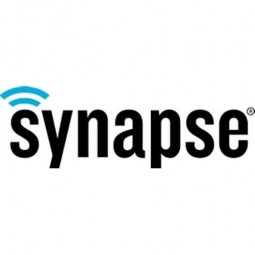
Technology Category
- Networks & Connectivity - WiFi
- Sensors - Optical Sensors
Applicable Industries
- Buildings
- Packaging
Applicable Functions
- Facility Management
- Procurement
Use Cases
- Building Automation & Control
- Smart Lighting
Services
- System Integration
The Customer
Uline
About The Customer
Uline is a family-owned business that has been the leading distributor of shipping and packaging solutions to businesses throughout North America for over 40 years. The company has built its brand on customer service, order accuracy, quick delivery, and low prices. With a robust, 800-page catalog and over 38,000 products, Uline operates an 800,000 square foot facility in Lacey, Washington. The facility houses thousands of individual luminaires and operates at peak efficiency, distributing several tons of product to customers on a daily basis.
The Challenge
Uline, a leading distributor of shipping and packaging solutions in North America, was facing a challenge with its lighting system. The company, known for its customer service, order accuracy, quick delivery, and low prices, needed its facilities to operate at peak efficiency. This included the 3,014 lights in its 800,000 square foot facility in Lacey, Washington. The company's Director of Engineering, Mike McConnell, was tasked with finding efficiency in every corner of the facility, including optimizing light to improve both operational and financial performance. The company had identified a luminaire that fit their needs, but struggled to find a reliable lighting controls provider that could deliver a solution at this scale to meet stringent energy codes and zoning requirements. The lights in the entire facility had to operate as a single system with one interface, adjust to natural lights from the skylights for daylight harvesting, and work with Uline’s existing IT systems. Other providers offered a mix of wired and wireless systems that were complex, hard to install and maintain, and couldn't scale to meet the size of the facility.
The Solution
Synapse provided a smart lighting solution that met Uline’s logistical needs and impacted their bottom line. The solution involved the installation of 3,014 high-bay luminaires at the Uline facility, integrated with Synapse’s SimplySnap wireless controls. SimplySnap is a scalable wireless platform that can manage multiple locations and single sites up to 10,000 lights. It allowed Uline to set up, control, monitor, and manage every light from a single user interface that integrates with Uline’s existing building management system (BMS). The high-bay lights respond instantly without delay and are optimized through SimplySnap’s precision controls and scheduling to respond to the natural lights from the warehouse’s skylights and enable daylight harvesting. The SimplySnap lighting solution comprises software and hardware components that are adaptable to multiple applications, providing reliable connectivity and control. The intuitive control and interface allowed for the creation of custom settings and schedules, maximizing Uline’s savings while giving them complete control of each light, bank, and zone.
Operational Impact
Quantitative Benefit

Case Study missing?
Start adding your own!
Register with your work email and create a new case study profile for your business.
Related Case Studies.

Case Study
Energy Saving & Power Monitoring System
Recently a university in Taiwan was experiencing dramatic power usage increases due to its growing number of campus buildings and students. Aiming to analyze their power consumption and increase their power efficiency across 52 buildings, the university wanted to build a power management system utilizing web-based hardware and software. With these goals in mind, they contacted Advantech to help them develop their system and provide them with the means to save energy in the years to come.

Case Study
Intelligent Building Automation System and Energy Saving Solution
One of the most difficult problems facing the world is conserving energy in buildings. However, it is not easy to have a cost-effective solution to reduce energy usage in a building. One solution for saving energy is to implement an intelligent building automation system (BAS) which can be controlled according to its schedule. In Indonesia a large university with a five floor building and 22 classrooms wanted to save the amount of energy being used.

Case Study
Powering Smart Home Automation solutions with IoT for Energy conservation
Many industry leaders that offer Smart Energy Management products & solutions face challenges including:How to build a scalable platform that can automatically scale-up to on-board ‘n’ number of Smart home devicesData security, solution availability, and reliability are the other critical factors to deal withHow to create a robust common IoT platform that handles any kind of smart devicesHow to enable data management capabilities that would help in intelligent decision-making

Case Study
IoT Data Analytics Case Study - Packaging Films Manufacturer
The company manufactures packaging films on made to order or configure to order basis. Every order has a different set of requirements from the product characteristics perspective and hence requires machine’s settings to be adjusted accordingly. If the film quality does not meet the required standards, the degraded quality impacts customer delivery causes customer dissatisfaction and results in lower margins. The biggest challenge was to identify the real root cause and devise a remedy for that.

Case Study
Zenon the Ideal Basis for An Ergonomic HMI
KHS develops and produces machines and equipment for filling and packaging in the drinks industry. Because drinks manufacturing, filling and packaging consist of a number of highly complex processes, the user-friendly and intuitive operation of equipment is increasingly gaining in significance. In order to design these processes as simple as possible for the user, KHS decided to introduce a uniform, transparent and standardized solution to the company. The HMI interface should meet the requirement for people with different qualifications and enable them to work on a standard platform.




